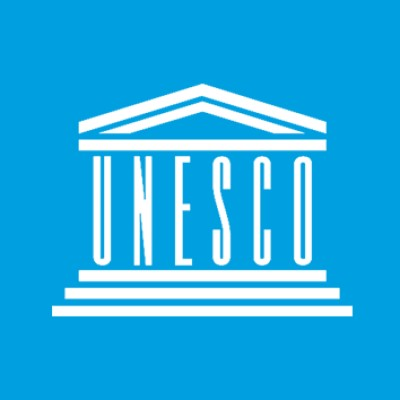Meta's Language Initiative: Bridging Gaps in AI and Inclusivity
February 8, 2025, 3:45 am

Location: United States, California, Menlo Park
Employees: 1001-5000
Founded date: 2010
Total raised: $40M

Location: Australia, New South Wales, Concord
Employees: 51-200
Founded date: 2016
Total raised: $494M
In a world increasingly defined by digital communication, language remains a powerful barrier. Meta, the tech giant formerly known as Facebook, is stepping up to dismantle this barrier. In partnership with UNESCO, Meta has launched a new program aimed at enhancing artificial intelligence (AI) capabilities in speech recognition and translation. This initiative is not just about technology; it’s about inclusivity and understanding in a diverse world.
The Language Technology Partner Program is a call to action. Meta seeks collaborators who can provide at least 10 hours of voice recordings, extensive written text, and translated phrases across various languages. The goal? To create AI models that can understand and translate languages that are often overlooked. The data collected will be made available as open-source, allowing developers worldwide to contribute and benefit.
Among the first partners is the government of Nunavut, Canada. Here, the Inuktut language is spoken by a portion of the population. This partnership highlights a commitment to preserving and promoting lesser-known languages. It’s a step toward ensuring that technology serves everyone, not just the majority.
However, the road is not without its bumps. Meta has faced criticism regarding its moderation of non-English content. Reports indicate that nearly 70% of COVID misinformation in Spanish and Italian went unchecked, compared to 29% in English. Such discrepancies raise questions about the effectiveness of AI in managing diverse languages. Furthermore, leaked documents reveal that Arabic posts are often misclassified, leading to unjust penalties for users.
Meta acknowledges these challenges. The company is actively working to improve its translation and moderation technologies. The aim is to create a more inclusive environment where all voices are heard and understood. This initiative is not merely a technological upgrade; it’s a commitment to social responsibility.
In addition to the language program, Meta has introduced an open-source benchmark for machine translation. This tool allows developers to assess the performance of translation models. It supports seven languages and is accessible through the Hugging Face platform, a hub for AI development. By providing this resource, Meta encourages collaboration and innovation in the field of language technology.
The expansion of Meta AI’s multilingual capabilities is another significant aspect of this initiative. The company is testing features like automatic dubbing for Instagram Reels. This tool allows creators to sync their speech with translated audio, making content more accessible to a global audience. It’s a creative solution to a complex problem.
Yet, while these advancements are promising, they come with a caveat. Meta’s efforts may be seen as self-serving. By improving its AI models, the company stands to gain a competitive edge in the tech landscape. Critics argue that the motivations behind these initiatives are not purely altruistic. However, the potential benefits for users cannot be ignored.
The importance of language in our interconnected world cannot be overstated. Language shapes our identities, cultures, and interactions. When technology fails to recognize this diversity, it risks alienating entire communities. Meta’s initiative aims to bridge this gap, fostering understanding and communication across linguistic divides.
As the digital landscape evolves, so too must our approach to language and technology. Meta’s partnership with UNESCO is a step in the right direction. It signals a recognition of the need for inclusivity in AI development. By prioritizing lesser-known languages, Meta is not just enhancing its technology; it is honoring the rich tapestry of human expression.
The challenges ahead are significant. Ensuring that AI can accurately interpret and translate a multitude of languages requires ongoing effort and collaboration. It demands a commitment to continuous improvement and adaptation. Meta’s willingness to engage with diverse communities is a promising sign.
In conclusion, Meta’s language initiative is more than a technological endeavor. It is a commitment to inclusivity, understanding, and respect for all languages. As the company navigates the complexities of AI and language, it has the opportunity to set a precedent for the tech industry. The future of communication depends on our ability to embrace diversity. Meta’s initiative is a crucial step toward that future. By breaking down language barriers, we can build a more connected and compassionate world.
The Language Technology Partner Program is a call to action. Meta seeks collaborators who can provide at least 10 hours of voice recordings, extensive written text, and translated phrases across various languages. The goal? To create AI models that can understand and translate languages that are often overlooked. The data collected will be made available as open-source, allowing developers worldwide to contribute and benefit.
Among the first partners is the government of Nunavut, Canada. Here, the Inuktut language is spoken by a portion of the population. This partnership highlights a commitment to preserving and promoting lesser-known languages. It’s a step toward ensuring that technology serves everyone, not just the majority.
However, the road is not without its bumps. Meta has faced criticism regarding its moderation of non-English content. Reports indicate that nearly 70% of COVID misinformation in Spanish and Italian went unchecked, compared to 29% in English. Such discrepancies raise questions about the effectiveness of AI in managing diverse languages. Furthermore, leaked documents reveal that Arabic posts are often misclassified, leading to unjust penalties for users.
Meta acknowledges these challenges. The company is actively working to improve its translation and moderation technologies. The aim is to create a more inclusive environment where all voices are heard and understood. This initiative is not merely a technological upgrade; it’s a commitment to social responsibility.
In addition to the language program, Meta has introduced an open-source benchmark for machine translation. This tool allows developers to assess the performance of translation models. It supports seven languages and is accessible through the Hugging Face platform, a hub for AI development. By providing this resource, Meta encourages collaboration and innovation in the field of language technology.
The expansion of Meta AI’s multilingual capabilities is another significant aspect of this initiative. The company is testing features like automatic dubbing for Instagram Reels. This tool allows creators to sync their speech with translated audio, making content more accessible to a global audience. It’s a creative solution to a complex problem.
Yet, while these advancements are promising, they come with a caveat. Meta’s efforts may be seen as self-serving. By improving its AI models, the company stands to gain a competitive edge in the tech landscape. Critics argue that the motivations behind these initiatives are not purely altruistic. However, the potential benefits for users cannot be ignored.
The importance of language in our interconnected world cannot be overstated. Language shapes our identities, cultures, and interactions. When technology fails to recognize this diversity, it risks alienating entire communities. Meta’s initiative aims to bridge this gap, fostering understanding and communication across linguistic divides.
As the digital landscape evolves, so too must our approach to language and technology. Meta’s partnership with UNESCO is a step in the right direction. It signals a recognition of the need for inclusivity in AI development. By prioritizing lesser-known languages, Meta is not just enhancing its technology; it is honoring the rich tapestry of human expression.
The challenges ahead are significant. Ensuring that AI can accurately interpret and translate a multitude of languages requires ongoing effort and collaboration. It demands a commitment to continuous improvement and adaptation. Meta’s willingness to engage with diverse communities is a promising sign.
In conclusion, Meta’s language initiative is more than a technological endeavor. It is a commitment to inclusivity, understanding, and respect for all languages. As the company navigates the complexities of AI and language, it has the opportunity to set a precedent for the tech industry. The future of communication depends on our ability to embrace diversity. Meta’s initiative is a crucial step toward that future. By breaking down language barriers, we can build a more connected and compassionate world.

